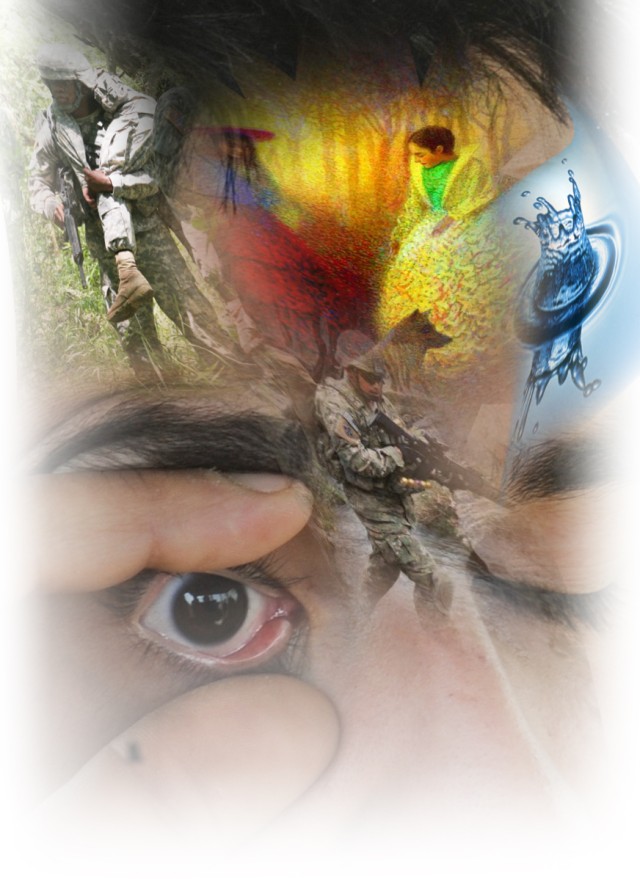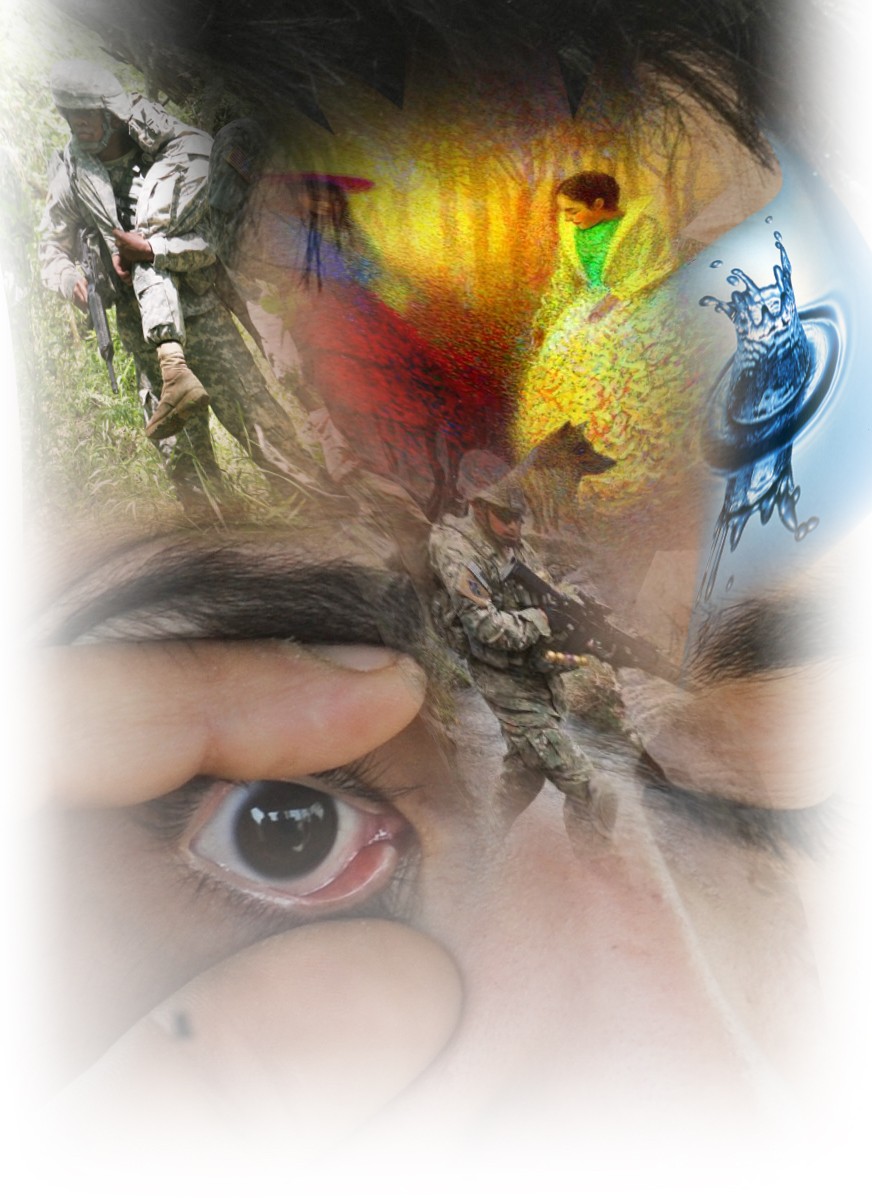FORT SAM HOUSTON, Texas -- On a table in a brightly colored kitchen bathed with sunlight sits a big bug. "I heard it say hamburger, hamburger," a young man says.
A child describes seeing a highway with lots of cars rushing back and forth. But there are no people inside those cars.
"I was riding the subway and I noticed that I could suddenly see into things. There was a young woman and in her purse she had handcuffs," says another young lady, who continues to describe a second scenario.
"I was in a field and I could see what looked like hundreds of silver and purple flowers. As I approached I realized that were actually parasols and then they would make a sound like a gong."
"I'm holding a big glass of milk and there's a head of lettuce in it," says a third person.
A talking bug, x-ray vision and nonsensical scenes are several of the dreams researchers pursue in "What are dreams' Inside the Sleeping Brain," recently shown at Brooke Army Medical Center as an opportunity for staff to learn about the science behind sleeping and dreams.
The film was broadcast on television last year as part of Public Broadcasting Service's NOVA science series.
"Most people are really interested in what dreams mean and whether there is a purpose to them," explained Sandy Fitzgerald, who coordinated a series of presentations for BAMC staff as part of the Department of Nursing's Resiliency Program.
Fitzgerald said that sleep is a huge issue for BAMC staff.
"Sleep is critical to resilience. It's one of the biggest issues for Soldiers when they're deployed and redeployed," she said. "Many have difficulty sleeping when they return - experiencing nightmares."
Fitzgerald said her resiliency series is a way of giving respite to the doctors, nurses and staff needing a little "doctoring" as well.
Working with critically ill and wounded warriors returning from war zones is very stressful for staff she said, adding that many have been deployed, then hit the ground in a fully-functioning capacity caring for others on their return.
"By and large health care providers are very resilient people used to a high tempo. But they need nurturing as well because they don't always think to take care of themselves," Fitzgerald said.
She is also trying to sow seeds for others to think about in terms of overall health, resilience and alternative therapies are related.
"Knowledge can never hurt but specifically with dreams, if it raises questions and inspires dialogue about these things then maybe there would be some positive changes individually and systematically."
Fitzgerald said staff found the dream research fascinating.
"Dreams have been responsible for two Nobel Prizes, the invention of a couple of major drugs, other scientific discoveries, several important political events and innumerable novels, films and works of visual art," said Deirdre Barrett, a dreams researcher at Harvard Medical School.
Barrett related that the periodic table of the elements was said to have come to the Russian chemist Dmitri Mendeleev during a dream. She said Elias Howe's solution to creating a needle for his new invention, the sewing machine, was revealed in a nightmare.
"One night he dreamed of being attacked by cannibals with spears. And as he woke up in terror, the last thing he saw was that all of their spears had the hole at the pointed tip of the spear, and he realized that's where you put the hole in a sewing machine needle," Barrett said.
Researchers describe two types of dreaming during the sleep studies chronicled on the DVD and theorize that each has different roles.
"Sleep studies have revealed that not only do we dream in REM (rapid eye movement) sleep, we also dream in non-REM sleep and they are different," explained Erica Harris, a sleep researcher at Boston University.
Scientists found after non-REM dreaming, self-concept and self-regard was positive, but more negative after subjects were waked from REM sleep. This suggests the proportion of REM and non-REM sleep may be a factor in depression.
Dreams also help with learning and memory.
Robert Stickgold, a sleep researcher from Harvard University, has subjects play video games they are unfamiliar with; then instructs them to think about their performance before sleeping.
"This is all about the function of sleep and the role of dreaming and processing memory," Stickgold said. "It makes the memory more useful for the future. We know they're getting better when they play again."
Fitzgerald said she plans to continue showing the "Dreams" DVD and is willing to lend it to other departments.
She has also started a massage therapy program for staff. "We offer chair massages from five to eight minutes. There is data out there that even a brief massage has benefits for staff resilience."
But the massage therapy is not offered to patients at this time.
"Hopefully there will be enough evidence related to healing to demonstrate that massage would be beneficial to patients as well. We're not there yet," Fitzgerald said. "When staff starts seeing the benefits for themselves, that thinking will translate."


Social Sharing